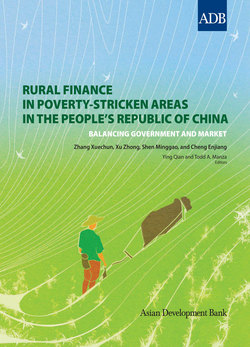Читать книгу Rural Finance in Poverty-Stricken Areas in the People's Republic of China - Xuechun Zhang - Страница 14
На сайте Литреса книга снята с продажи.
Urbanization: From Rural Migrant Workers to Urban Residents
ОглавлениеTransforming farmers into migrant workers is not the ultimate goal, and it is necessary to enable migrant workers to become new citizens or new residents of urban areas. This is urbanization. For a long time, the PRC’s urbanization has lagged far behind industrialization. Less than 40% of the PRC’s labor force has urban hukou (a residential certificate), but 60% of the labor force is engaged in nonagriculture sectors. Inadequate urbanization impedes the transfer of the labor force from agriculture to industry while also constraining the development of consumer and service sectors in migrant workers’ places of origin. This is an important cause of tepid consumption.
The change of status from migrant worker to new urban resident can directly improve farmers’ welfare. Migrant workers with such status can at least join in the social security network provided by local governments and share in public resources such as education and medical services. The change of status also can fundamentally change the migratory habits of a population on the move, from individual to family-based migration. Such a change will have positive effects on consumption and the development of the service and real estate sectors.
Presently, the PRC’s urbanization has three shortcomings. First, the residential system that has been in place for nearly half a century was intended to prevent farmers’ free migration and relieve burdens on cities. It is a system that sacrifices farmers’ interests to support industrial development in cities. Second, the current land system forbids collateralization and sales of land, which reduces farmers’ ability to raise funds and to migrate. Finally, the reforms of the residential and land systems promote the development of urban belts in the coastal regions, concentrating economic activity but preventing concentration of population in urban areas. At present, the Pearl River Delta, the Yangtze River Delta, and the Bohai Rim account for one-third of the national gross domestic product, and with the expansion of urban belts, the proportion will probably increase to around 50% or 60% by 2020. The size is comparable to that of urban belts in the United States and Japan. The development of urban belts makes possible large-scale labor transfer from the agriculture sector to the industrial sector, and from the central and western regions to the coastal regions.
